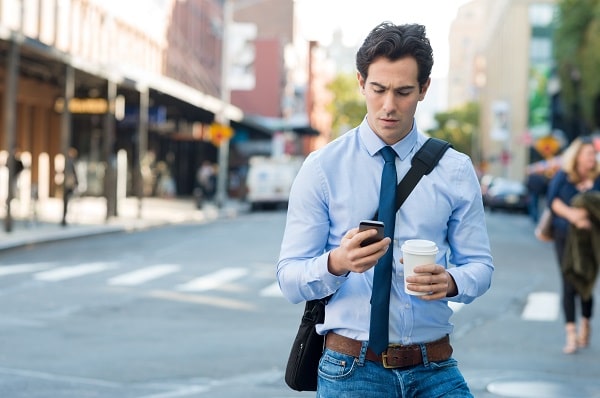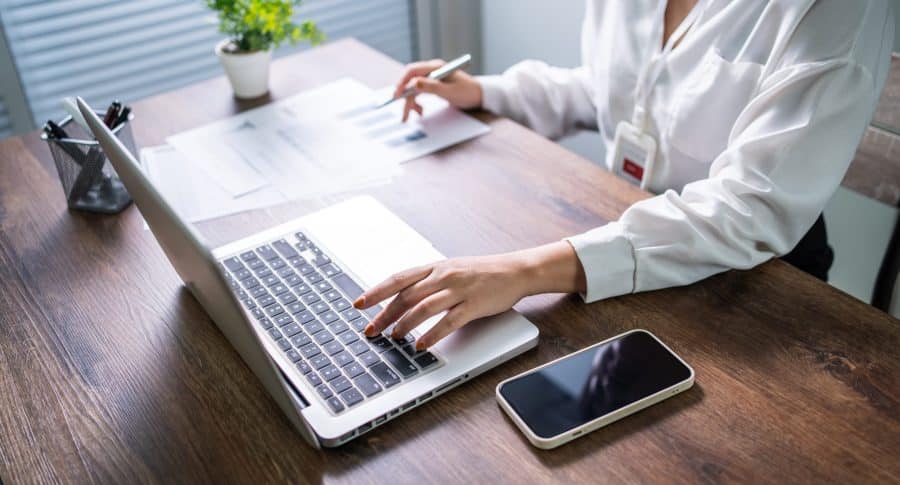Do you know what your body is saying? Many people don’t, which can lead to many problems in their personal and professional lives. This post will look at some of the basics of reading body language. It will go over some of the most common gestures and expressions and explain their meaning. Understanding how to read body language can improve your communication skills and build better relationships with the people around you!
Contents
- 1 What Is Body Language?
- 2 Why Body Language Is Important
- 3 Open Palms Means Honesty
- 4 Raised Eyebrows Means Skepticism
- 5 Lack Of Blinking Means Lying
- 6 Eye Contact Means Attraction
- 7 Crossed Legs Means Defensiveness
- 8 Clenched Jaw Means Stress
- 9 Mirrored Body Language Is A Good Sign
- 10 Learning How To Read Body Language Isn’t Hard!
What Is Body Language?

Body language is a form of communication that relies on nonverbal cues, such as posture, facial expressions, and hand gestures. Though it is often in conjunction with spoken words, body language can convey a message even if you speak no words. For example, crossing your arms in front of your chest may indicate that you feel defensive or closed off.
On the other hand, leaning in toward someone may signal that you are interested in what they are saying. Paying attention to body language can help you better understand how someone is feeling and what the person is trying to communicate.
Why Body Language Is Important

You can use body language to communicate various messages, including emotional states, intentions, and speaker attitudes. Body language is essential to communication because it can provide important information about what a person is thinking or feeling. It can also create a rapport with another person or establish trust and mutual understanding. Additionally, you can use body language to monitor the reactions of others and to gauge their level of interest or engagement in a conversation.
When understanding how to read body language, it is essential to remember that everyone is different. Just as everyone has a different personality, people also express themselves in different ways. That said, there are still some general tips that can help understand what somebody else is trying to communicate. However, the best way to start reading body language is to look for clusters of gestures rather than trying to interpret a single gesture independently.
Open Palms Means Honesty

When it comes to interpreting body language, a few key indicators can help give you a better understanding of what someone is trying to say. One of the most telling cues is the position of the hands. Generally speaking, if someone has their palms open, it’s a sign that they’re being truthful and honest.
On the other hand, if someone has their palms closed or clasped in front of them, it’s often an indication that they’re holding something back or hiding something. So, next time you’re trying to read someone’s body language, pay close attention to their hands. If their palms are open, it’s a good bet they’re being truthful with you.
Raised Eyebrows Means Skepticism

Raised eyebrows are one of the most common body language cues. This cue is often in conjunction with other body language cues, such as crossed arms or a furrowed brow. When you see someone with raised eyebrows, it usually means they are skeptical or doubtful about something. However, raised eyebrows can also be a sign of surprise or confusion.
So, how can you tell the difference? If the person raises their eyebrows slightly, they are more likely surprised. If the person raises eyebrows significantly, they are more likely to be skeptical or doubtful. Nonetheless, raised eyebrows are a body language cue worth paying attention to! Of course, it’s always important to consider the context of the situation before making any assumptions.
Lack Of Blinking Means Lying

When you’re talking to someone, do you ever notice that they blink less than normal? It’s a sign that they’re lying. When you interact with others, your brain processes a lot of information, and blinking helps release some of that tension. When you lie, your brain works overtime to keep up the deception, which means you don’t have as much time to blink.
So if you notice that someone is barely blinking while talking to you, it’s a good indicator that they’re not being truthful. Of course, other factors can affect the blinking rate, so it’s not always a surefire way to tell if someone is lying. But it’s something to remember the next time you’re trying to read someone’s body language.
Eye Contact Means Attraction

Regarding reading body language, eye contact is one of the most important cues to look for. People who are attracted to you will almost certainly maintain eye contact with you for longer than usual. They may also find excuses to touch their face or hair while talking to you or lean in closer than usual.
Of course, it’s important to interpret these cues in context – if someone is making polite conversation, they may not be attracted to you. However, if you notice multiple cues that indicate attraction, it’s a good bet that the person likes you!
Crossed Legs Means Defensiveness

Crossing legs are a classic sign of defensiveness if you’re trying to read someone’s body language. It indicates that the person is physically closed off and not interested in hearing what you have to say, accompanied by crossed arms, which furthers the barrier between you, which can be a significant obstacle to productive negotiation in a business setting.
If you see that your counterpart has their legs crossed, it’s best to try and open them up by moving closer or sitting down yourself, which will help create a more comfortable environment and make them more likely to be receptive to your offer.
Clenched Jaw Means Stress

When you feel anxious or under pressure, your natural reaction is to tighten your muscles, including those in your face. One of the most telling signs of stress is a clenched jaw. A clenched jaw can be a sign that someone is feeling stressed, worried, or angry. It can also be a symptom of TMJ, which is a condition that causes pain and stiffness in the jaw joint.
If you notice someone’s clenched jaw, it’s essential to pay attention to other body language cues to see if they are stressed or if there might be another reason for their tightness. A clenched jaw is one way your body shows you when you are under pressure.
Mirrored Body Language Is A Good Sign

Seeing someone whose body language reflects your own creates a sense of rapport and connection because you feel understood and acknowledged. Mirroring also conveys respect and creates a feeling of unity. When you are in sync with someone else, it helps you to feel more comfortable and open. As a result, mirrored body language is often a good sign in social interactions. It indicates that you are on the same wavelength and have the potential for a positive relationship.
However, it is essential to know that mirroring can also happen unintentionally. Find yourself mirroring someone’s body language. It may be worth taking a step back to assess whether you truly agree with the person or if you are responding automatically. Either way, understanding how mirrored body language affects you can help you interpret the nonverbal cues you see in others.
Learning How To Read Body Language Isn’t Hard!
Reading body language is a complex and nuanced task. However, by paying attention to the cues discussed in this article, you will get a better understanding of what someone is saying – even if they’re not using words. So the next time you’re in a meeting or just having a conversation, make sure to pay attention to the nonverbal cues of the people around you. It could give you the edge you need to close the deal or make the right decision.


